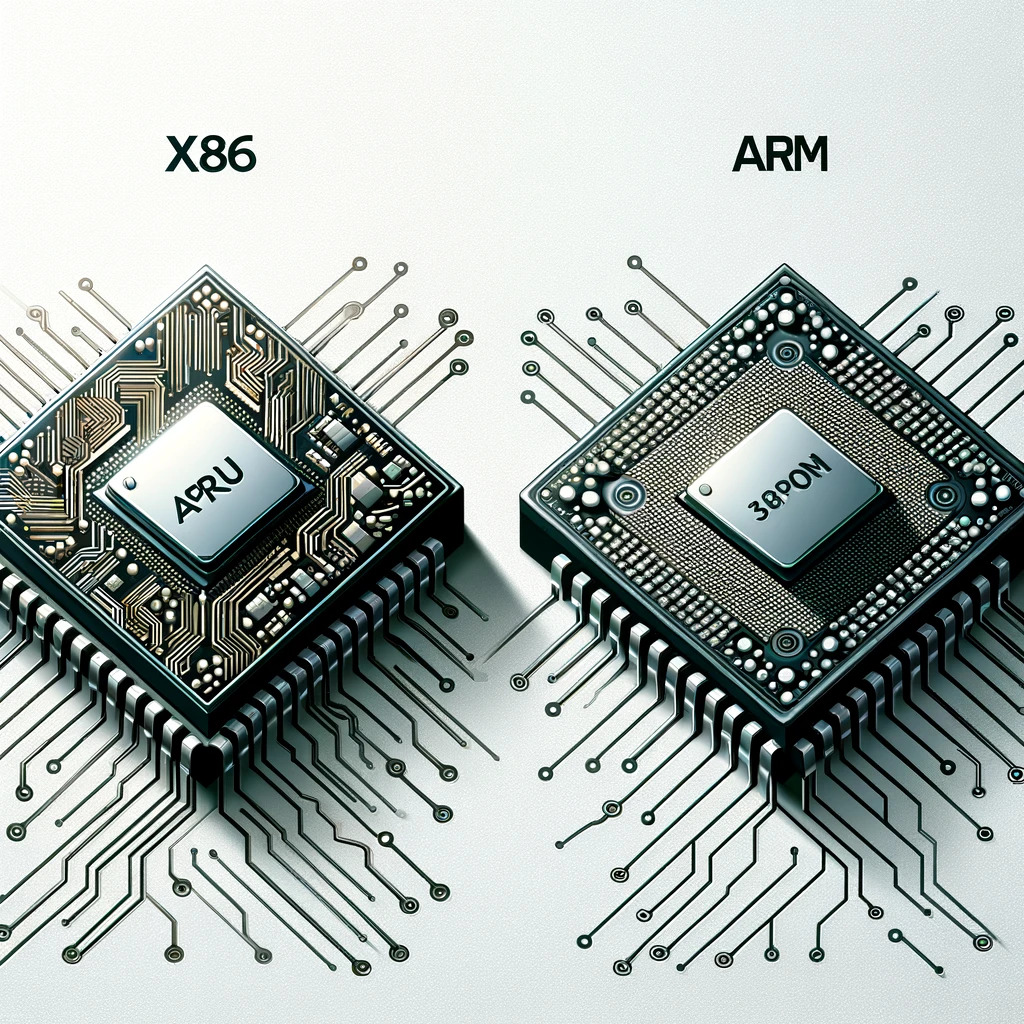ARM Holdings, originally Acorn RISC Machine, and later Advanced RISC Machines, has a history that spans several decades and is marked by its transition from a computer manufacturer to a semiconductor intellectual property (IP) provider, which has significantly influenced the global technology market.
1983-1990: Formation and Early Years
- ARM was originally established as a joint venture between Acorn Computers, Apple Computer (now Apple Inc.), and VLSI Technology to develop a new type of processor architecture. This was partly influenced by Acorn’s need for a powerful chip for its new line of personal computers.
- The ARM1, their first processor, was completed in 1985 and used in Acorn’s computers.
1990-2000: Expansion and Licensing
- ARM’s business model shifted towards licensing low-power IP cores to other companies. This model proved to be successful and has since been adopted by numerous technology companies.
- ARM’s energy-efficient processors became popular for mobile devices. Their designs were licensed by many companies for use in PDAs and early smartphones.
2000-2010: Dominance in Mobile Devices
- The 2000s saw ARM’s architecture become the de facto standard for mobile device processors due to its power efficiency, which is crucial for battery-powered devices.
- ARM Holdings went public, further solidifying its financial foundation and allowing for more aggressive expansion.
2010-2020: Expansion into New Markets
- ARM processors began to be used beyond mobile phones, including tablets, embedded systems, and even some server applications.
- The Internet of Things (IoT) became a significant growth area for ARM, with its architectures being used in a wide variety of connected devices.
2020-Present: Acquisitions and New Horizons
- In 2016, ARM Holdings was acquired by SoftBank Group for £24.3 billion. SoftBank’s investment allowed ARM to pursue new research and development avenues.
- In 2020, NVIDIA announced plans to acquire ARM from SoftBank for $40 billion, though this acquisition faced regulatory scrutiny from various countries.
- ARM continues to innovate in the field of mobile processors and is now challenging the traditional x86 dominance in the personal computing market with companies like Apple adopting ARM architecture for its new M1 chip in the Macintosh computer line.
Throughout its history, ARM’s unique business model of licensing out its architecture rather than manufacturing its own chips has allowed for widespread adoption of its technologies, making it one of the most pervasive architectures in the mobile and embedded processor markets.
Let’s see the main differences between both chipset architectures
x86 Architecture:
- CISC Approach: x86 is based on Complex Instruction Set Computing (CISC), which means it has a rich set of instructions, some of which can execute complex tasks in a single instruction.
- Power Consumption: Typically, x86 processors consume more power, which can make them less ideal for battery-powered devices.
- Performance: Due to the CISC approach, x86 processors often have higher clock speeds and better performance for complex computing tasks.
- Legacy Software Compatibility: The x86 architecture has a long history in desktop and server computing, ensuring extensive compatibility with a vast range of legacy software.
- Vendor Dominance: Intel and AMD are the primary manufacturers of x86 processors.
ARM Architecture:
- RISC Approach: ARM uses Reduced Instruction Set Computing (RISC), which simplifies the processor design by using simpler instructions that can execute tasks more efficiently, albeit usually requiring more instructions for complex tasks.
- Power Efficiency: ARM processors are known for their power efficiency, which makes them suitable for smartphones, tablets, and other mobile devices.
- Performance per Watt: ARM designs offer a better balance of performance to power consumption, often leading to longer battery life for devices.
- Customization: ARM Holdings licenses the ARM architecture to other companies, which allows them to create custom chip designs that meet their specific needs.
- Ubiquity in Mobile Devices: ARM is the dominant architecture in mobile devices due to its power efficiency and performance characteristics.
Key Differences:
- Instruction Set: x86 processors have a larger and more complex set of instructions compared to the streamlined, simpler instructions in ARM processors.
- Power Usage: x86 processors are usually less power-efficient than ARM processors.
- Performance Characteristics: x86 processors are typically faster for single-threaded applications due to higher clock speeds, but ARM processors can be more efficient in multi-threaded scenarios and offer better performance per watt.
- Application: x86 is traditionally used in desktops, laptops, and servers, while ARM is used in mobile devices and is increasingly being adopted in servers and desktops/laptops (e.g., Apple’s M1 chip for Macs).
- Hardware Control: ARM provides more flexibility for manufacturers to integrate their own hardware innovations, whereas x86 manufacturers are more rigid in their design offerings.
Both architectures are evolving rapidly x86 is seeing improvements in power efficiency, while ARM is making strides in performance. This convergence is leading to a more competitive landscape, as evidenced by ARM’s entry into markets traditionally dominated by x86, such as laptops and servers.
x86 Companies:
- Intel Corporation: The leading manufacturer of x86 processors, known for its series of CPUs for computers and servers, including the Core, Xeon, and Pentium series.
- Advanced Micro Devices (AMD): Intel’s main competitor in the x86 space, known for its Ryzen, Threadripper, and EPYC series of processors.
ARM Companies:
- ARM Holdings (now part of NVIDIA, formerly SoftBank): They don’t manufacture CPUs but license the ARM architecture to other companies who then design their own processors based on this architecture.
- Apple Inc.: With the introduction of its M1 chip, Apple has become a significant player in the ARM-based processor market, using the architecture for its line of MacBooks, iMacs, and Mac mini computers.
- Qualcomm Technologies: Known for its Snapdragon series, these ARM-based processors are widely used in smartphones, tablets, and other mobile devices.
- Samsung Electronics: Designs ARM-based Exynos processors that power a variety of devices, including smartphones and tablets.
- MediaTek: A company that designs processors for a wide range of mobile devices and is known for its ARM-based chips.
